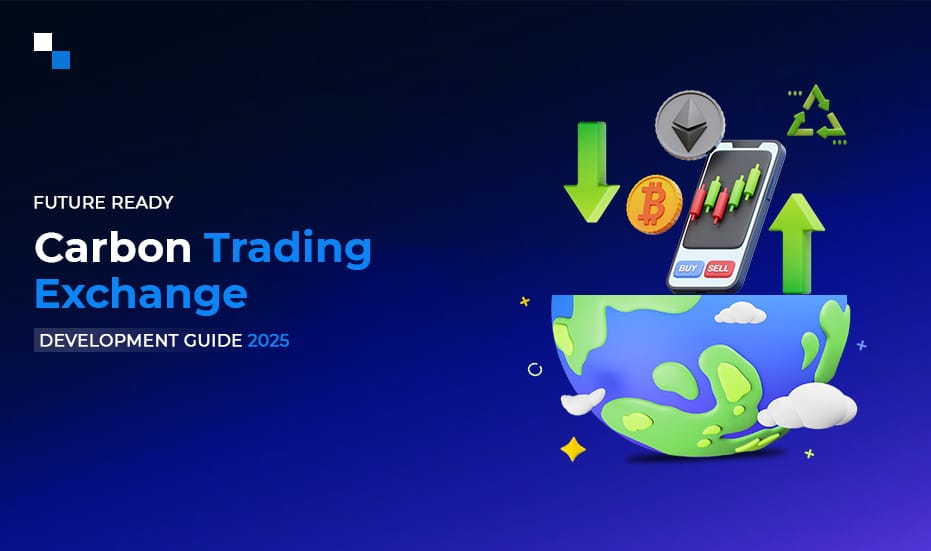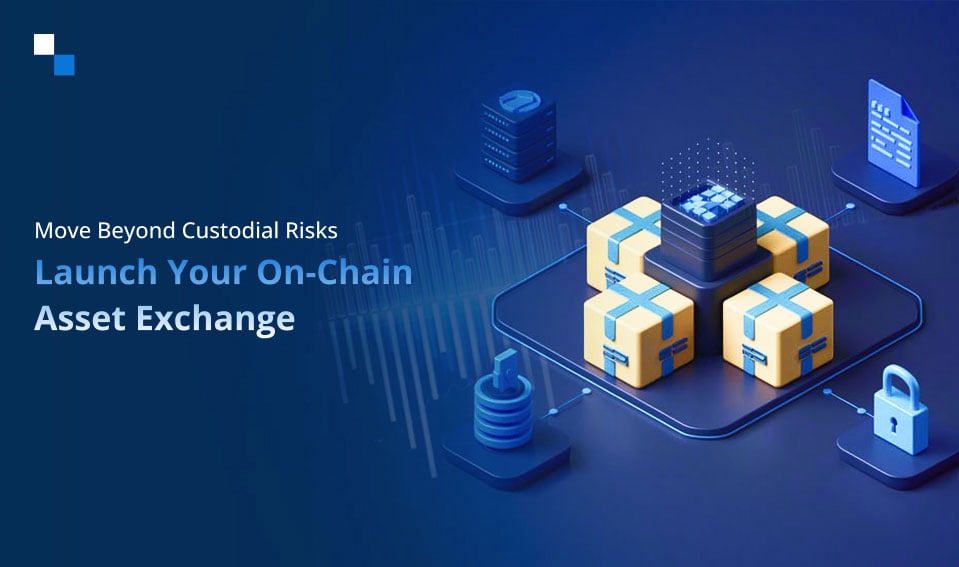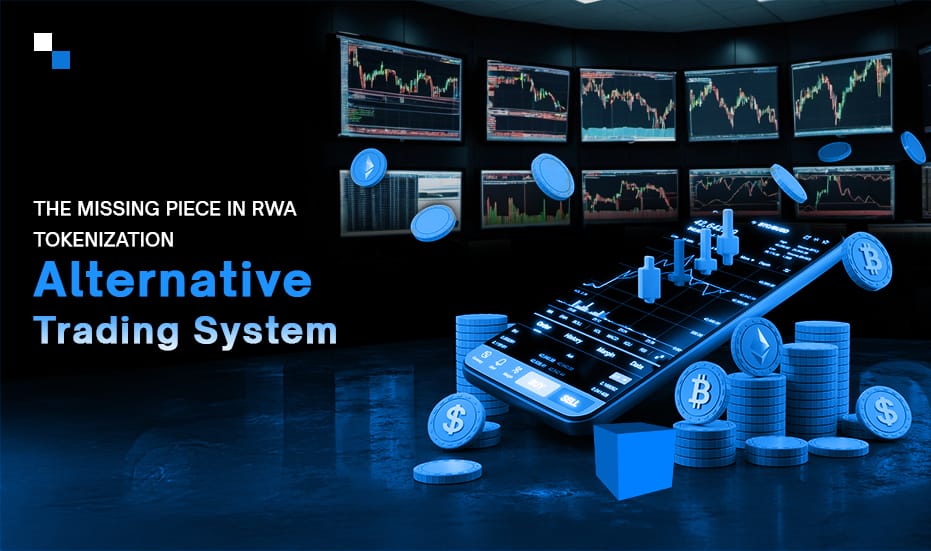
Top Sui Games of 2025 and How to Build One
December 4, 2024
White Label Crypto Wallet App: The Ultimate Tool for Efficient Global Payroll Systems
December 5, 2024Introduction
“We are running the most dangerous experiment in history right now, which is to see how much carbon dioxide the atmosphere can handle before there is an environmental catastrophe.” – Elon Musk
By 2025, the race against catastrophic climate change will have reached a critical juncture. While the emissions soar and the relentless march of temperature rise fueled by unchecked carbon emissions threatens to unravel the delicate ecological balance, corporations face mounting pressure to act. Carbon credits, the currency of sustainability, emerge as a glimmer of hope, representing verified reductions in greenhouse gas emissions that can be earned through reforestation, renewable energy projects, and energy efficiency initiatives. These digital tokens allow companies to offset their carbon footprints by investing in certified environmental projects.
Carbon credit markets offer a promising avenue to incentivize carbon reduction efforts. As the world intensifies its efforts to combat climate change, carbon credit trading exchanges are set to play a pivotal role in 2025. These platforms facilitate efficient trading of tradable certificates representing the right to emit one ton of carbon dioxide or an equivalent amount of other greenhouse gases. The carbon credit exchange market is not saturated so there’s an opportunity for business planning to tap in amid the growing need for sustainability and regulatory pressures. But how do you develop a platform that’s both efficient and impactful?
Let’s explore that!
3 Reasons To Set Up A Carbon Trading Exchange in 2025
As the world grapples with an existential crisis, it spurs the need for innovative solutions to reduce carbon emissions. Carbon Credit Exchange Platform Development emerges as a powerful tool to foster sustainability. Conventional carbon trading mechanisms, plagued by inefficiencies and opacity, are being eclipsed by innovative blockchain-powered digital trading infrastructures that optimize the processes and bring transparency to the carbon markets.
Let’s discuss five reasons why one must build an exchange like the Carbon Trade Exchange CTX in 2025.
- Net-Zero Commitments: Many countries and corporations aim to reach net-zero emissions by 2050, with milestones in 2025 and 2030. According to the International Energy Agency, more than a threefold surge in clean energy investment is required to achieve net zero emissions by 2050. While environmentally responsible businesses strive to adapt to cleaner energy alternatives, they can invest in more sustainable practices to offset their carbon emissions. Carbon trading exchanges present a new approach by bringing a market-based solution to reduce carbon footprints.
- Regulatory Push: Governments are introducing stricter carbon regulations, making compliance essential. They’ve been promoting green practices by setting up mandatory and voluntary codes, stringent targets, and incentivization schemes for businesses. In the past few years, governments have been actively involved in implementing carbon taxes or cap-and-trade systems, regulations like the Clean Air Act, the Water Pollution Control Act, subsidies and incentives, etc. With Carbon Credit Exchange Platform Development, a business can tap into the “going green” trend and benefit generously while contributing to the environment’s sustainability.
- Corporate Responsibility: Since companies seek transparent ways to demonstrate their sustainability efforts, carbon credits present a compelling opportunity. These platforms built on distributed ledger technology can bring a whole new level of efficiency and transparency to sustainability management. A well-designed carbon credit trading exchange can bridge the gap between companies looking to offset emissions and projects that generate verified carbon credits.
Key Components of a Carbon Credit Trading Exchange
The carbon market can be divided into two main segments: compliance markets, where companies must adhere to regulatory limits, and voluntary markets, where businesses and individuals choose to offset their emissions. Depending on the choice of segment and level of centralization, the businesses can have the following segments in their Carbon Credit Exchange Platform Development.
1. Tokenization of Carbon Credits
One integral component of every carbon trading exchange is converting carbon credits into tradable on-chain assets (NFTs or utility tokens). This enhances transparency, security, traceability, and management of carbon credits.
2. Trading Engine
A future-ready carbon credit trading platform comes integrated with a robust matching engine to facilitate frictionless buying, selling, and trading of carbon credits. The trading engine handles the most integral function and is a crucial component of trading platforms like the Carbon Trade Exchange CTX.
3. User Interface
Building a user-friendly interface for novice, experienced traders, sustainability-focused companies, and environmentalists is paramount to attaining a user base as a new establishment. Since a huge percentage of the potential carbon credit traders are non-technical, it is better to opt for centralized or hybrid carbon credit exchange platform development.
4. Security Protocols:
Blockchain integration brings transparency, traceability, immutability, and security to carbon credit trading. However, a reliable crypto exchange development company might help you integrate more security protocols to enhance the security of user data and funds.
5. Wallet Integration:
A trading platform like Carbon Trade Exchange CTX must introduce and integrate various digital asset wallets to allow users to store and manage their tokenized carbon credits.

6. Compliance and Regulatory Framework:
Building trust within the audience and regulatory bodies is essential to gaining acceptance and popularity as a carbon trading platform. So, the aspiring carbon trading exchange must adhere to international carbon market standards and regulations and connect with recognized carbon credit standards such as Gold Standard, Verra, etc. They can also partner with reputable certification bodies to verify carbon credits, making their platform more authentic and reliable.
7. Blockchain and Smart Contracts
As discussed above, blockchain creates a transparent ledger of all transactions, making them immutable. This way, it brings unparalleled efficiency and trust to the carbon credit trading exchange. Smart contract integration can further automate verification and settlement processes to reduce fraud and ensure compliance.
8. Revenue Models
Carbon credit trading platforms may charge a small fee for each trade and collect listing fees from environmental projects. They can also offer subscription plans for premium features like advanced analytics or portfolio management tools.
9. AI and Big Data Integration:
The integration of artificial intelligence and big data analytics with carbon trading exchanges will optimize carbon sequestration projects and trading strategies, making markets more efficient and profitable. AI can also be leveraged to analyze carbon market trends and predict credit prices.
Carbon Credit Exchange Platform Development Steps
1. Define Objectives
Conduct thorough research and market analysis to understand the specific needs of your target audience (corporations, governments, or NGOs). After your research, you can clearly outline the goals of your carbon credit trading exchange platform and its customers. You may also consider planning the scale of operations and the specific features you want to implement before reaching out to a crypto exchange development company.
2. Choose the Right Technology Stack:
Select a blockchain platform that aligns with your project’s needs. Popular options include Ethereum for its smart contract capabilities or alternatives like Hyperledger, Polkadot, or Binance Smart Chain, which may offer different benefits in terms of scalability and transaction costs. A carbon trading exchange may also consider ensuring scalability by leveraging robust cloud infrastructures like AWS or Azure. They may also portray themselves as an environmentally friendly organization by choosing an eco-friendly consensus mechanism like Proof of Stake (PoS). It is often preferred for its lower energy consumption.
3. Implement Identity Verification For Regulatory Compliance
Integrate a robust identity verification system to authenticate users on your carbon credit trading exchange platform. Compliance with Know Your Customer (KYC) regulations is crucial for maintaining trust and security within the carbon credit marketplace. The exchange may work closely with legal experts to ensure that the platform adheres to relevant financial and environmental regulations. This step is vital for building credibility within the carbon credit market.
4. Develop Smart Contracts
Smart contracts are essential for automating transactions within your platform. They facilitate the creation, transfer, and verification of carbon credits while ensuring compliance with trading terms. In the case of centralized carbon trading exchange development, one must consider constructing a robust mechanism for real-time trading and secure settlements.
5. Intuitive User Interface
As mentioned above, planning and building a user-friendly UI/UX is essential for attracting and retaining a broader user base. Carbon trading marketplaces like Carbon Trade Exchange CTX must therefore design an intuitive yet easy-to-navigate interface that allows participants to trade carbon credits seamlessly. They may consider incorporating features like real-time analytics, clear dashboards, and straightforward transaction processes to enhance the user experience.
6. Conduct Testing
Before launching a carbon credit trading exchange platform, one must conduct thorough testing to identify vulnerabilities and ensure robust performance and stability under various trading scenarios. Regular security audits are also essential to safeguard user data and transactions against evolving threats.
7. Launch & Marketing
Plan a launch strategy targeting industries with high carbon footprints and emphasize the platform’s transparency, ease of use, or any other USPs.

Carbon Credit Trading Exchange Development: Challenges and Opportunities
- Regulatory Landscape: Navigating the complex regulatory landscape can be tricky while building a carbon trading platform.
- Standardization: Ensuring interoperability between different carbon credit standards and platforms is challenging yet essential to maintaining the integrity of the carbon credit market.
- Data Integrity: Verifying the authenticity and accuracy of carbon credit data can be a major challenge for carbon trading exchanges.
- Global Partnerships: Carbon credit marketplaces can collaborate with international organizations to ensure credibility and gain acceptance.
- Market Liquidity: Attracting buyers and sellers to the platform and maintaining market liquidity can be quite hard to crack for trading platforms like carbon trade exchange CTX.
Final Word
Developing a carbon credit exchange platform in 2025 isn’t just about technology—it’s about creating a sustainable future. As governments push businesses toward greener practices, the carbon trading market is set to grow exponentially. However, there come certain challenges while navigating a less crowded and more regulated market like that of carbon trading. One can shake hands with the best crypto exchange development companies and accomplish their goals by leveraging their technology expertise and strategic insights.
At Antier, we are a leading blockchain development company with a team of 1,000+ certified engineers ready to bring your vision to life. Whether you’re building blockchain-based or centralized trading platforms for tokenized carbon credits and real-world assets, we have the expertise to deliver innovative, scalable, and future-ready solutions. By combining blockchain’s transparency with a user-centric design, we can help you build a platform that empowers companies to meet their climate goals while driving profits.
The world is moving towards a greener economy and you can position your platform to be at the forefront of this transformation. Let’s collaborate to build a greener future together. Schedule your call now.



